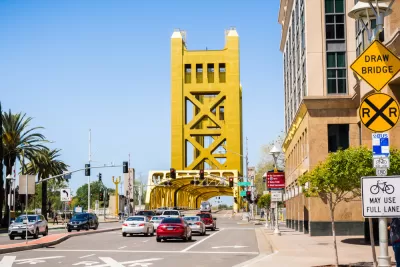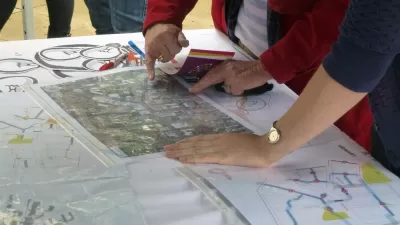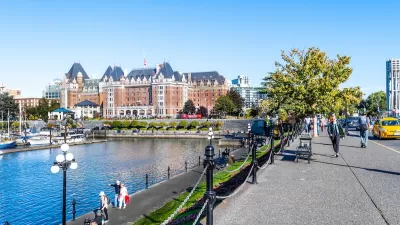The metropolitan areas with a lot of planning jobs, the highest paying planning jobs, and a growing number of planning jobs.

Richard Florida shares analysis of the geographical trends in work for urban planners. Florida chose the professional field of urban planning as an indicator species for a broader question about where "urbanists" work, but the distinction places the article's subject right in Planetizen's wheelhouse.
Florida's team of researchers collected occupational data for urban planners in the 100 largest metro area and "arrayed" the data across a few indicators: "metros with the highest concentrations of urban planners; metros where urban planners make the highest salaries; and metros where urban planning jobs have seen the most growth." The article also includes maps of the findings.
Florida's discoveries about urban planning work have less to do with the most urban environments in the country as one might assume. There's only a few places in the country that have an above average number of planners, and most places are working with far less than the average number of planners. Places with the most planners above average include Sacramento, San Francisco, and Honolulu.
The article finds similar geographic breakdowns in terms of planner pay scales and where planners are being hired. To sum, Florida says urban planning jobs are more spread out than one might assume:
If you’re an urban planner, or hope to pursue a career in planning, you can find high concentrations of planning jobs in state capitals like Sacramento and Austin, as well as in the nation’s capital. Well-paying jobs are in established tech hubs—the Bay Area, D.C., and Boston—but also in the lower-cost metros of Knoxville, Las Vegas, and Des Moines. And the fastest job growth is in less obvious, smaller cities in the South and West, such as Stockton and Fresno, California; McAllen and El Paso, Texas; and Sarasota, Cape Coral, and Lakeland, Florida.
FULL STORY: America's Hottest Cities for Urban Planners

Alabama: Trump Terminates Settlements for Black Communities Harmed By Raw Sewage
Trump deemed the landmark civil rights agreement “illegal DEI and environmental justice policy.”

Planetizen Federal Action Tracker
A weekly monitor of how Trump’s orders and actions are impacting planners and planning in America.

Why Should We Subsidize Public Transportation?
Many public transit agencies face financial stress due to rising costs, declining fare revenue, and declining subsidies. Transit advocates must provide a strong business case for increasing public transit funding.

Understanding Road Diets
An explainer from Momentum highlights the advantages of reducing vehicle lanes in favor of more bike, transit, and pedestrian infrastructure.

New California Law Regulates Warehouse Pollution
A new law tightens building and emissions regulations for large distribution warehouses to mitigate air pollution and traffic in surrounding communities.

Phoenix Announces Opening Date for Light Rail Extension
The South Central extension will connect South Phoenix to downtown and other major hubs starting on June 7.
Urban Design for Planners 1: Software Tools
This six-course series explores essential urban design concepts using open source software and equips planners with the tools they need to participate fully in the urban design process.
Planning for Universal Design
Learn the tools for implementing Universal Design in planning regulations.
Caltrans
Smith Gee Studio
Institute for Housing and Urban Development Studies (IHS)
City of Grandview
Harvard GSD Executive Education
Toledo-Lucas County Plan Commissions
Salt Lake City
NYU Wagner Graduate School of Public Service





























